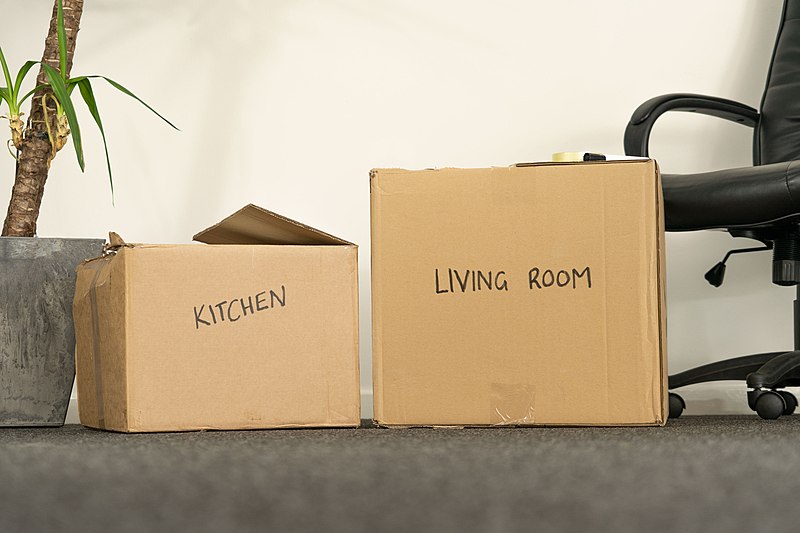
Moving in and moving out is always quite stressful and overwhelming.
Your belongings and life are getting fit into the boxes and being transferred to a different place.
The end of the tenancy term is typically a contract-set time, however, it always seems to come unexpectedly, turning your home into a chaos-like cave.
Instead of leaving everything for the last moment, it will be smart to plan the move-out, arranging everything step-by-step, thus, leaving no place for all the hustle and bustle.
The checklist of essentials when moving out:
1. The terms
First of all, it is important to check the ‘big day’ date. If you are a fixed-period tenant, it is stated in the contract; provided you are a periodic tenant, you will have to notify your landlord a month before moving out.
2. Moving company
Search for a few moving companies in the area and get their quotes. It’s worth checking the prices to make sure they fit your budget, however, transporting has never been cheap.
It is also important to read reviews about them, as you don’t want your belonging to get broken.
Additionally, you may ask about their license and insurance, so that the question of safety will not bother you.
3. Packing
Packing is daunting as there seem to be more clothes and stuff than ever before.
The equipment includes boxes, bubble wrap or newspapers, tape, plastic bags, and a permanent marker.
Packing essentials:
– Color-code every room, so you will easily navigate among all the stuff in case you need something;
– First-necessity things should always be within easy reach. Therefore, pack them into a separate box or just keep them in the bag close to you;
– All the rarely-used things should be packed first;
– Easily-breakable and fragile things must go in a separate box, wrapped in bubble wrap a few times, or even in a blanket. The box should be signed with the big letter “FRAGILE” and set aside.
– Sign every box and make a list of the content, thus, future unpacking will be a lot easier.
As a rule, packing should start two-three weeks before the X-day, thus you will have everything properly wrapped, placed, and taped.
The less time you leave for it, the more fuss and panic you will have.
4. Cleaning
When the place is finally free from all the stuff, it’s time for the next big step – cleaning.
Cleanliness is often a matter of dispute, thus, it’s important to take it seriously.
After everything is taken away, all the places that were neglected while regular cleaning are showing up – baseboards, corners with grime and cobwebs, bathroom utilities, door handles, etc.
You need to equip yourself with a bucket of water, wipes, a mop, cleaning sprays, and gloves to make everything sparkle. Well, at least, make it look the way you saw it when moving in.
If you have no desire to make your hands dirty and waste time on all the cleaning, hire a one-off cleaning before moving out, who will take care of everything.
One more advantage of hiring a cleaning company is the receipt you get after the service is performed, as it will be proof for an over-fastidious landlord (in case yours is like that).
5. Minor repairs
If you moved into an apartment with white walls and you painted them blue, you will you to repaint everything again.
The holes in the walls should be fixed, unless they had been there before you.
The light bulbs should be replaced with working ones as well. The door or window handles must be fixed as well if they got loose.
Basically, the apartment must look and function exactly the same way as when you moved in.
6. Photographing
Photographing is a security measure nowadays. It is worth taking photos of the place when you move in and move out if the landlord finds some ‘new’ unacceptable scratches.
If there were some visible damages or stains, making a video would be the most appropriate choice.
It is also better to keep all the photos and videos in a separate folder, not to delete them unintentionally.
7. Return the keys on time
The keys should be returned on a fixed day, otherwise, a part of your deposit payment will be gone for nothing.
It will always be a good idea to ask the landlord to write a confirmation about the keys being returned.
It may seem paranoid, however, it will help you avoid any issues in the future.
8. Contact the utility company
You are supposed to pay for the utilities up until the day you leave. Make sure you take the final meter readings, and contact the providers of the services to notify them about the changes.
Yet again, don’t forget to take photos of the digits.
If you follow the checklist step-by-step, moving out will not seem like a stressful experience anymore, as you will not be pressed for time, and will not forget about anything (which can also be the source of financial losses).
Take your time and get on top of things.
(Pic under creative commons licence https://commons.wikimedia.org/wiki/File:Moving_House_Boxes_-_51246058600.jpg)

















I thought comments Jeanne are supposed to be helpful not sarcastic, I doubt you have had much experience moving house anyway
I have, and here are my top tips
1/ declutter drawers and cupboards and make three piles, one to gift, one to sell, one to keep
2/ the ones to sell or gift give them to friends to store till after the move
3/ the ones to keep label and ask a relative to care for them
4/ are you taking or needing all of your furniture, donate excess to charity, they will collect for free
5/ pack an essentials box of important papers passport insurances bank accts etc along with a suitcase of need to wear now clothes lasting a month plus toiletries and medication
6/ the rest of the wardrobe contents pack in plastic bags one colour per person or buy those portable wardrobe boxes for certain garments that need to be crease free
take the bags and roll down the stairs to be loaded in vehicles faster
also anything else that won’t break goes into bags, saves you buying 100’s of boxes
for the day of the move put into a box a kettle, toaster, cutlery and crockery basic food and snacks and loads of biscuits and chocolate to keep you going.
Stunning article packed with sterling advice for people moving home.
I shall make a note of the top tip of marking boxes containing fragile items with the word ‘fragile’.